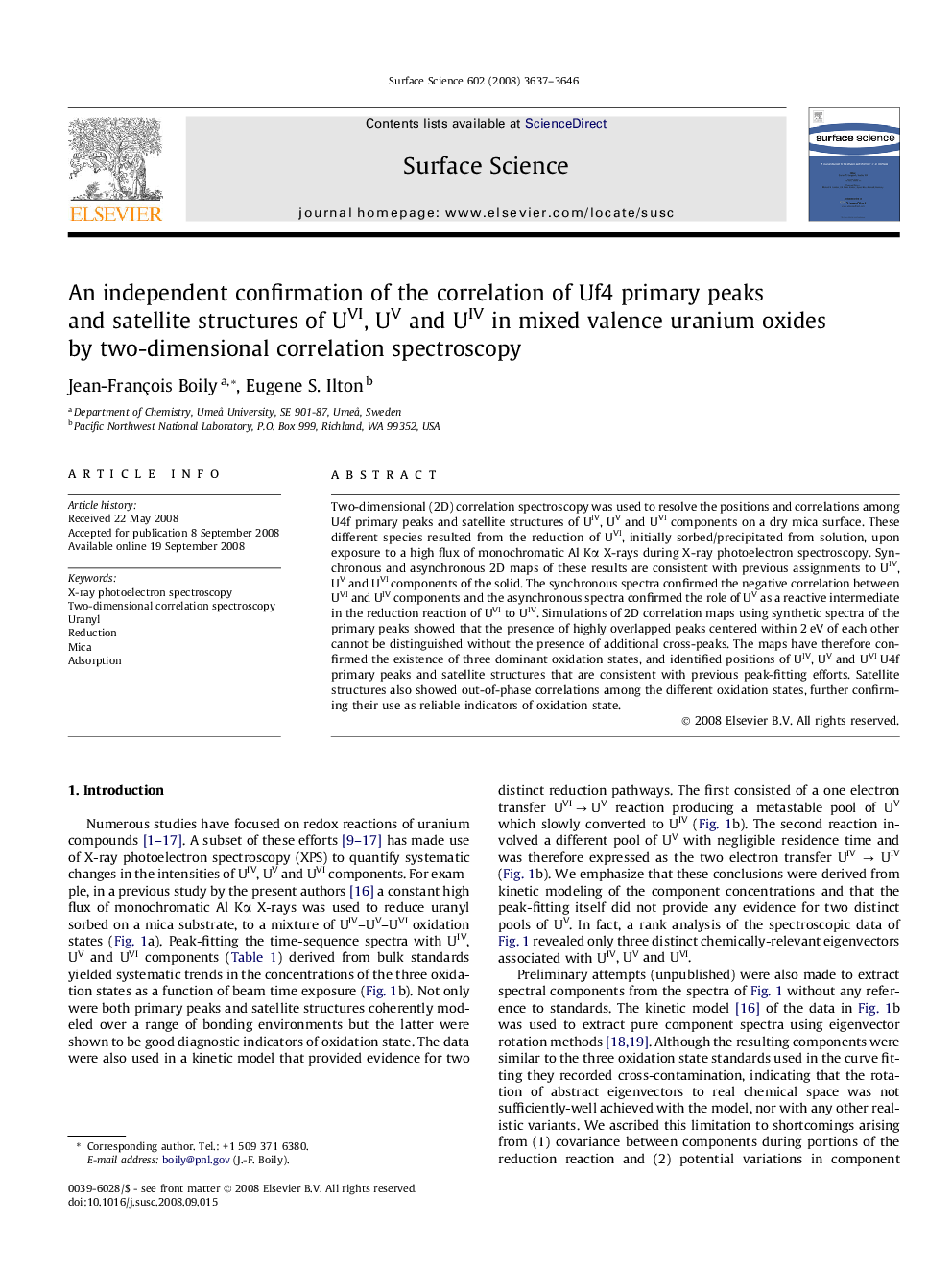| Article ID | Journal | Published Year | Pages | File Type |
|---|---|---|---|---|
| 5424382 | Surface Science | 2008 | 10 Pages |
Two-dimensional (2D) correlation spectroscopy was used to resolve the positions and correlations among U4f primary peaks and satellite structures of UIV, UV and UVI components on a dry mica surface. These different species resulted from the reduction of UVI, initially sorbed/precipitated from solution, upon exposure to a high flux of monochromatic Al Kα X-rays during X-ray photoelectron spectroscopy. Synchronous and asynchronous 2D maps of these results are consistent with previous assignments to UIV, UV and UVI components of the solid. The synchronous spectra confirmed the negative correlation between UVI and UIV components and the asynchronous spectra confirmed the role of UV as a reactive intermediate in the reduction reaction of UVI to UIV. Simulations of 2D correlation maps using synthetic spectra of the primary peaks showed that the presence of highly overlapped peaks centered within 2 eV of each other cannot be distinguished without the presence of additional cross-peaks. The maps have therefore confirmed the existence of three dominant oxidation states, and identified positions of UIV, UV and UVI U4f primary peaks and satellite structures that are consistent with previous peak-fitting efforts. Satellite structures also showed out-of-phase correlations among the different oxidation states, further confirming their use as reliable indicators of oxidation state.
